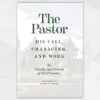Book Review: Houses That Change the World, by Wolfgang Simson
The nature of the church is serious business. What you believe about the church—who it is and how it lives—will affect profoundly the way you understand and live the Christian life. It’s no wonder then so many books have been written recently about what God intends the church to be. A fair number of those books call for a radical re-tooling of the church’s structures—new wineskins for a new generation. On one level, there’s no problem with that at all. Many people through Christian history have called for awakening in a cold, dead, institutionalized church. I’m all for that, and I think it is sorely needed in many corners of the church today. Where I begin to get skeptical, however, is when someone claims to have found a simple yet revolutionary and sure-fire answer to all the church’s problems. Sadly, that’s where most modern books on the church fall. It is certainly where Wolfgang Simson’s Houses That Change the World(Waynesboro, GA: Authentic Lifestyle, 2003) falls.
Like so many before and beside him, Simson believes we need a major reformulation of the church’s life and structure. Speaking that broadly, I’d probably agree with him. But Simson is convinced he has the answer to the church’s ills: we should abandon our church buildings and start meeting in houses. The book doesn’t lend itself well to quick summary; the organization isn’t straightforward. The overarching thesis of the book is the superiority of meeting in houses, and how that concept would change the nature and spirit of church as we all know it. Within that concept, some of the major themes are the leadership structures of house churches (five-fold ministry from Ephesians 4:11-13), the difference between house churches and cell churches, the blessing of persecution, multiplication, and change. I don’t want to try to trace and discuss all these themes; to do so would require more than a review and would probably be more distracting than helpful anyway. Instead, I want to point out what I consider to be some of the most serious flaws in Simson’s book: his thesis itself, and his use of the Bible to prove it.
Before we begin, let me mention a few less-important problems with the book. First, here’s how Simson ends his preface:
Millions of Christians around the world are aware of an imminent reformation of global proportions. They are saying, in effect, “Church as we know it is preventing Church as God wants it.” Amazingly, many are hearing God say the very same thing to them. There is a new collective awareness of an age-old revelation, a corporate spiritual echo. . . I am convinced that it reflects a part of what the Spirit of God is saying to the church today. (xiii-xvi)
Those words are nothing but a pep-talk. There is no room here for careful, prayerful thinking through the issues. Simson presents his ideas as some massive tidal wave of spiritual excitement—led by the Holy Spirit Himself, no less—that the reader is in danger of missing entirely if he doesn’t jump on board. But who exactly are the “millions?” Who are the “many” Christians hearing this message from God? Does Simson mean a majority of Christians around the world? A simple plurality? Just Simson and a few of his closest friends? He doesn’t tell us, which leads me to believe all this is more rhetoric than fact. On top of that, the book is too long; it repeats itself too much. If every point were made just once, and every cliché used just once, the book’s 300 pages could easily be brought down to fewer than 100.
But enough of that. There are some serious problems with Simson’s ideas which I believe deserve serious consideration. First, the very thesis of his book is misguided. Simson is convinced the church’s problem stems from its forsaking the New Testament model of meeting in houses. Simson does write about the nature and spirit of the church as well, but he is convinced that spirit will result from meeting in houses as opposed to traditional church buildings. He makes the point in several different places. One of the chapters, in fact, is subtitled “Thirteen reasons why house churches are the natural solution.” But why does Simson put so much emphasis on where the church meets? As I read the New Testament, I don’t see much ink at all spilt about the location; on the contrary, I see the apostles exhorting the churches about how they live and worship, not where. Consider this paragraph from page 81:
The house church reflects God’s qualities and character. This community lifestyle is molded in the spirit of love, truth, forgiveness, faith, and grace. House churches are the way we love each other, forgive each other, mourn with those who mourn and laugh with those who laugh, extend and receive grace and constantly remain in touch with God’s truth and forgiveness. It is a place where all masks can fall, and we can be open to each other and still keep loving each other.
Now read that paragraph again, but leave out the word “house.” What you’ll see, I think, is a good description of what the Lord calls his churches to be, no matter where they meet. It’s not the house that brings out such qualities. It is the Holy Spirit in the hearts of the regenerate. As for his reasons why a house-church set-up is better than any other, I can’t see how most of them have anything at all to do with meeting in a house (we’d stop doing church and start being church, for example; we’d have better leaders, better conversions, better missions, pp.197-205). In fact, the only advantage he points out that really makes sense is that house churches would cost less (36).
Simson tries to make a biblical case for house churches. “It is more biblical,” he says (36). His case is not impressive. On pages 92-94, Simson prints a long list of biblical passages about houses, which he admits is not “an extensive exegetical study of house churches in the Bible.” Most of his citations have nothing at all to do with a church meeting in a house, but are more along the lines of Jesus telling his disciples to stay in a house during their travels, or Cornelius inviting Peter into his house to preach the gospel. He even cites Acts 2:2 as evidence, saying “Pentecost happened in a house.” It is difficult to see why that’s important. The point of that story is what they were doing in the house—praying (1:14).
To clinch his case (171), Simson cites Stephen’s Acts 7 speech. Stephen made it through his address, Simson says, without rankling the Pharisees at all, “until he reached one single topic . . . which was the King of all Taboos.” And what was it? “Stephen had said: ‘The Most High does not live in temples made by men.’ Stephen had questioned the core of their belief, the temple, the religious building.” And the Pharisees, furious that Stephen would dare question their edifice, killed him. But is that really why the Pharisees finally stoned him? After all, Stephen’s line wasn’t anything new; what Pharisee wouldn’t have been familiar with 1 Kings 8:27, for example? The Pharisees weren’t angry because Stephen stepped on the sacred toes of their religious building. They were angry because five verses later (just before they actually call for his death), Stephen accuses them of murdering the Messiah! The building is the not the big issue here; the Messiah is.
There are other Scriptural missteps, too. One of the worst—and least obvious—is on pages 84-85, where Simson says New Testament teaching was more a conversation than modern-day “preaching.” He writes:
The Greek word often translated “preaching” in the New Testament is dialogizomai, which means to have a dialogue between people. When Paul ‘preached for a long time’ in Ephesus (Acts 20:7) . . . Paul did not preach at all in the sense of having an endless monologue; he was having a dialogue, a time of questions and answers.
There are several problems here. First of all, Acts 20:7 does not use dialogizomai at all; it uses dialegomai, which can have the meaning, “to exhort” or “to address.” (See especially Hebrews 12:5). Even if we look at Simson’s word dialogizomai, however, we find it is used only 16 times in the New Testament, and not one of those refers to anything close to the preaching of the gospel. Most have to do, in fact, with the Pharisees “dialogizomai-ing” in their hearts against Jesus. The most common verb for “proclaim, exhort” is kerysso, a word Simson does not mention but which is used 61 times in the New Testament. The preaching of the gospel then is not a conversation; it is the proclamation of God’s grace in redemption, an exhortation to sinful people to repent and believe.
All in all, this book will probably inject more confusion than clarity into the discussion of what the church ought to be. It is simply too sold on the notion that moving into houses will stir up all the right fruits of the spirit. The vision laid out is admittedly exciting, and it’s not surprising many people believe house or cell churches are the key to international missions. After all, who wouldn’t like to think that 12 people meeting in a house church could multiply their number to nearly 2 million in just 20 years (107)? But I wonder why we should assume that will happen; or better, why we should assume it will only happen if we meet in houses. If Christians were fervent in prayer, passionate in holiness, and scrappy in their evangelism, why couldn’t the same multiplication happen in a church of 200?
I don’t have anything against a church meeting in a house. Sometimes that’s a simple necessity, and besides, the building isn’t the important thing anyway. So go ahead and meet in a house if you want—just don’t fool yourself into thinkingthat will change the world. The only thing that will change the world is the gospel of Jesus Christ lived out by loving, passionate, Spirit-filled churches—no matter where they meet.








